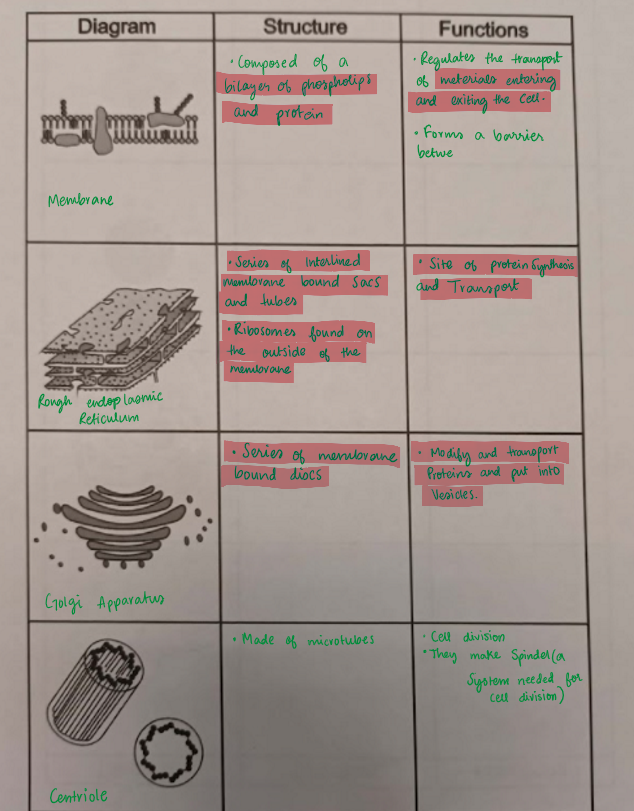microscopes/resolution : principles and applications of science
Nucleus has a double membrane with many pores
- contains DNA associated with histone
- proteins called chromatins
- nucleolus produces ribosomes which are assembled from RNA and protein
- genes contain proteins
mitochondria is a site of aerobic respiration and production of ATP
- they have a double membrane
- they have their own DNA
Lysosomes has a single membrane and enzymes
- responsible for breakdown of waste materials
- contains hydrolytic enzymes
- they breakdown old organelles and pathogens
- they are very dark
Ribosomes are very small organelles with no membrane
- made of protein and rRNA
- synthesises proteins using instructions from DNA and mRNA
- ribosomes are made up of two sub units one large and one small
Rough endoplasmic reticulum is the site of protein synthesis
- series of interlinked membrane bound sacs and tubes
- ribosomes are attached to the surface of the membrane
- site of protein synthesis and transport
Smooth endoplasmic reticulum - membranes involved in lipid and carbohydrate synthesis and storage
- series of interlinked membrane bound sacs and tubes
Golgi apparatus - series of membrane bound discs
- Golgi apparatus modifies proteins and packs them into vesicles
- releases proteins from rough endoplasmic reticulum into vesicles
- releases modified proteins in vesicles from secretion or transport inside the cell
Cytoskeleton - gives the cell its structure
- microfilaments for movement and they are made-up of protein
- microtubules for structure (structural fibres) - also made up of protein
- intermediate fibers : gives mechanical strength to cells
Flagella and cilia - both have the same basic structures
- they are the extension of the cell membrane that contain a central pair of flagella and cilia
- flagella - is a whip like structure used for cell motility
- cilia - is a hair like structure surrounding the cells and is used for both cell motility and movement of fluids or small objects in close proximity to the cells that posses them.
Microvilli - are finger like extensions of the cell surface membrane
- their function is to increase the surface area for absorption of substances
- found on epithelial cells living in the small intestine

